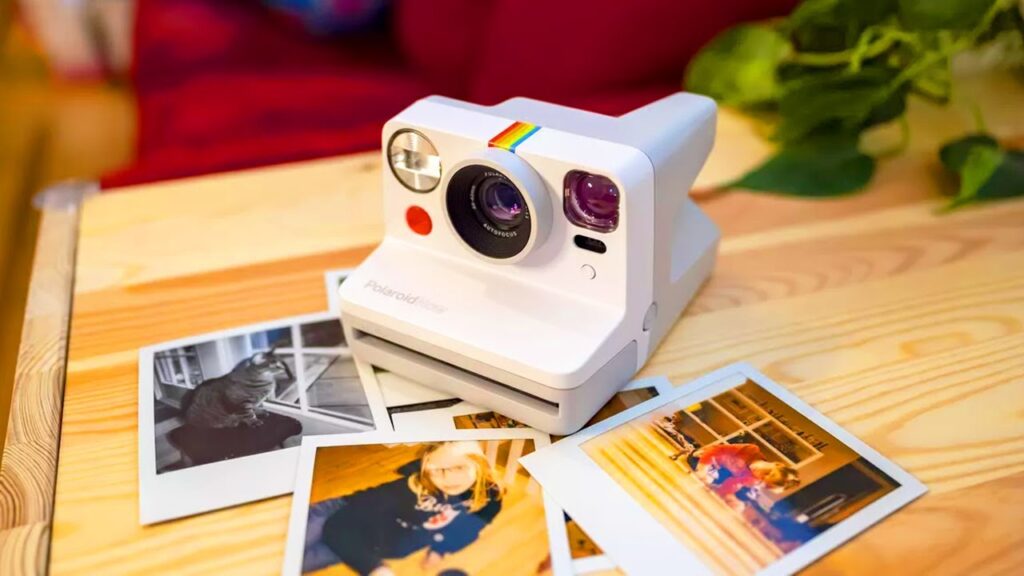Photography
Top 10 Polaroid Photo Tips: The Last One Will Surprise You!
The polaroid photo is a classic that never goes out of style. They are a great way to capture special moments and add a touch of personality to your decor. If you're thinking about starting to take polaroid photos, or if you want to improve your skills, here are 10 tips that will help you.
1. Choose the right camera for the best polaroid photo
Why is it important to choose the right camera?
The camera is your main instrument for taking polaroid photos. It's important to choose a camera that's right for your needs and budget. If you're a beginner, a basic camera is a good option. These cameras are generally easy to use and have an affordable price. If you already have some experience, you can opt for a camera with more features, such as a selfie mode or brightness control.
What types of polaroid cameras are available?
There are two main types of Polaroid cameras: analog and digital. Analog cameras use Polaroid film, which is a type of photographic film that develops the photo instantly. Digital cameras use a digital sensor to capture the image, which is then printed on a sheet of paper.
What are the pros and cons of each type of camera?
Analog cameras have the advantage of being cheaper and producing more authentic-looking photos. However, they are also more difficult to use and Polaroid film can be expensive. Digital cameras are easier to use and can produce higher quality photos. However, they are more expensive and can produce less authentic-looking photos.
What are some tips for choosing a Polaroid camera?
Here are some tips for choose a polaroid camera:
- Consider your needs and budget.
- Decide whether you want an analog or digital camera.
- Consider the features you want, like a selfie mode or brightness control.
- Read polaroid camera reviews for more information.
2. Learn about the exhibition
Why is exposure important?
Exposure is the amount of light that hits the camera sensor. If the exposure is incorrect, the photo may be under or overexposed. Underexposed photos are dark and overexposed photos are light.
How to learn about the exhibition?
There are several ways to learn about exposure. You can read books or articles about photography, or watch online tutorials. Another way to learn is to practice taking photos in different lighting conditions.
What three factors determine exposure?
The three factors that determine exposure are:
- The opening: The aperture is an opening in the camera shutter that controls the amount of light that enters the sensor.
- Shutter speed: Shutter speed is the time the camera shutter is open to allow light to enter the sensor.
- ISO sensitivity: ISO sensitivity is a measure of the sensor's sensitivity to light.
How to adjust exposure?
You can adjust exposure by changing the aperture, shutter speed, or ISO sensitivity.
3. Use light to your advantage
Why is light important?
Light is one of the most important factors in taking good photos. Natural light is always the best option, but if you're shooting indoors, use soft artificial lighting. Avoid shooting against direct sunlight as this can cause harsh shadows.
How to use light to your advantage?
Here are some tips for using light to your advantage:
- Photograph in natural light whenever possible.
- If you're shooting indoors, use soft artificial lighting.
- Avoid shooting in direct sunlight.
- Use light to create shadows and contrasts.

4. Try different angles
Why is trying different angles important?
Experimenting with different angles can help you create more interesting and creative photos. try it photograph from above, below, front or side. You can also try taking photos from close up or far away.
How to try different angles?
Here are some tips for trying different angles:
- Stand, squat, or lie down to get different perspectives.
- Use a tripod to keep the camera steady.
- Use a wide-angle lens to capture more of the scene.
5. Use compounding to your advantage
Why is composition important?
Composition is the distribution of the elements of the polaroid photo in the frame. A good composition can make a simple photo become a work of art. There are many composition rules you can follow, but the best way to learn is to experiment with different techniques.
Composition rules
- Rule of thirds: Divide the frame into nine equal parts, using two horizontal and two vertical lines. Place the focal point of your photo at one of the intersection points of the lines.
- Symmetry rule: Symmetry is a classic composition that creates a feeling of balance and harmony.
- Leadership rule: Use lines or elements to guide the viewer's eye to the focal point of the photo.
- Rule of simplicity: Sometimes less is more. A simple composition can be more effective than a complex composition.
Composition Examples
- Landscape photography: Use the rule of thirds to frame the landscape in a balanced way. You can also use horizontal or vertical lines to create depth or movement.
- Portrait Photography: Place the focal point of the portrait in the center of the frame, or use the rule of thirds to create a more dynamic effect.
- Close-up photography: Use symmetry or the rule of leadership to create an interesting composition.
Avoiding repetitions
To avoid repetition, use different composition techniques in your photos. For example, you might use the rule of thirds in one photo and the rule of symmetry in another. You can also experiment with different angles and focal lengths.
Bonus tip
Don't be afraid to experiment and play with different ideas. The best way to learn how to compose photos is to practice.
FAQs about polaroid photos
1. What is the best polaroid camera for beginners?
The best Polaroid camera for beginners is a basic camera that is easy to use. Some good options include the Polaroid Now, Polaroid Go, and Polaroid OneStep 2. These cameras have basic features like automatic exposure control, flash, and self-timer.
2. How to use auto exposure on my polaroid camera?
Most Polaroid cameras have an autoexposure control that adjusts the exposure of the photo automatically. To use automatic exposure, simply select automatic mode on your camera.
3. How to use the flash on my polaroid camera?
The flash can be useful for taking photos in low-light environments. To use the flash on your Polaroid camera, simply activate the flash on your camera.
4. How to use the self-timer on my polaroid camera?
The self-timer is useful for taking photos of yourself or other people. To use the self-timer on your Polaroid camera, simply select the self-timer mode on your camera.
5. What are the composition rules for polaroid photos?
Composition rules are guidelines that can help you create more balanced, attractive photos. Some of the most common composition rules for polaroid photos include:
- Rule of thirds: Divide the frame into nine equal parts, using two horizontal and two vertical lines. Place the focal point of your photo at one of the intersection points of the lines.
- Symmetry rule: Symmetry is a classic composition that creates a feeling of balance and harmony.
- Leadership rule: Use lines or elements to guide the viewer's eye to the focal point of the photo.
- Rule of simplicity: Sometimes less is more. A simple composition can be more effective than a complex composition.
6. How do I add more details to my polaroid photos?
Here are some tips for adding more details to your polaroid photos:
- Use a tripod to keep the camera steady. This will help prevent blurry photos and ensure your photos are sharp.
- Use a wide-angle lens to capture more of the scene. This can be useful for landscape photos or photos of groups of people.
- Use a telephoto lens to bring your subject closer. This can be useful for photos of animals or details.
- Use filters or effects to add a creative touch to your photos.
7. How can I avoid repetitions in my polaroid photos?
To avoid repetition in your polaroid photos, use different composition techniques in your photos. For example, you might use the rule of thirds in one photo and the rule of symmetry in another. You can also experiment with different angles and focal lengths.
8. What is the best way to preserve my polaroid photos?
Polaroid photos are fragile and can deteriorate over time. To preserve your Polaroid photo, store them in a cool, dry place. Avoid exposing photos to direct sunlight or moisture.
9. How to share my polaroid photos?
You can share your Polaroid photos in several ways, including:
- Displaying them on the wall: Polaroid photos are a great way to decorate your home or office.
- Putting them in an album: Photo albums are a great way to preserve your memories.
- Sharing on social media: You can share your polaroid photos on social media such as Instagram or Facebook.
10. What are some tips for taking creative polaroid photos?
Here are some tips for taking creative Polaroid photos:
- Try different angles and perspectives.
- Use the light to your advantage.
- Add creative elements like filters or stickers.
- Be creative and use your imagination.









